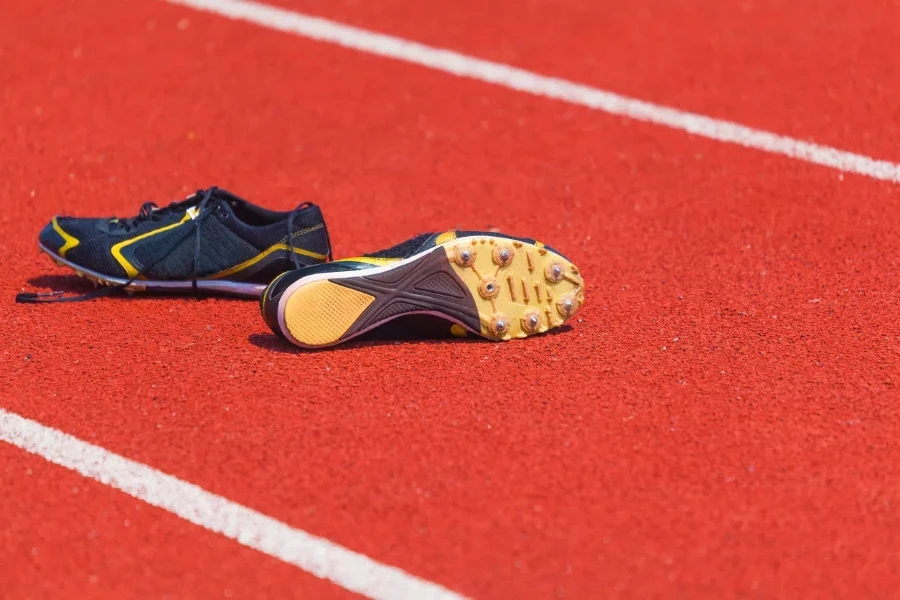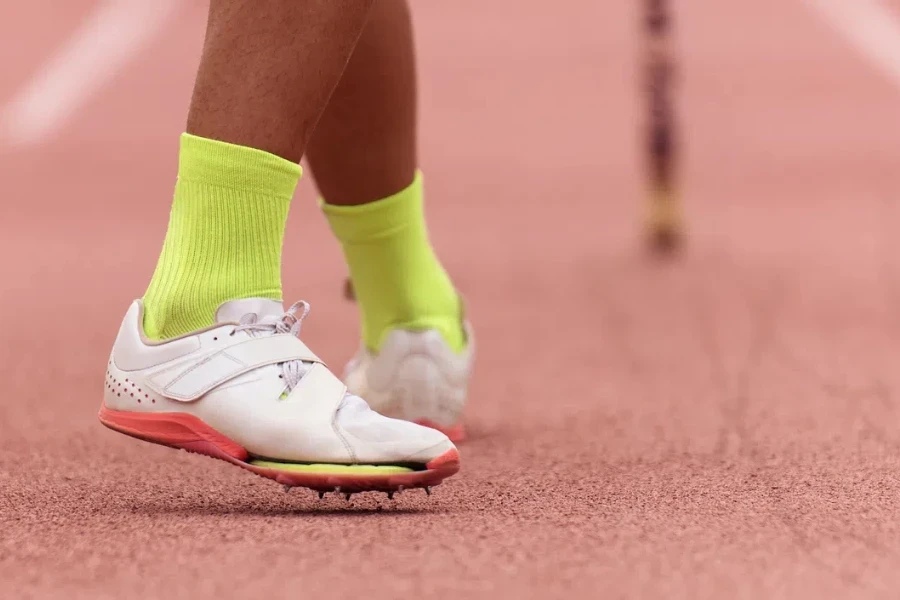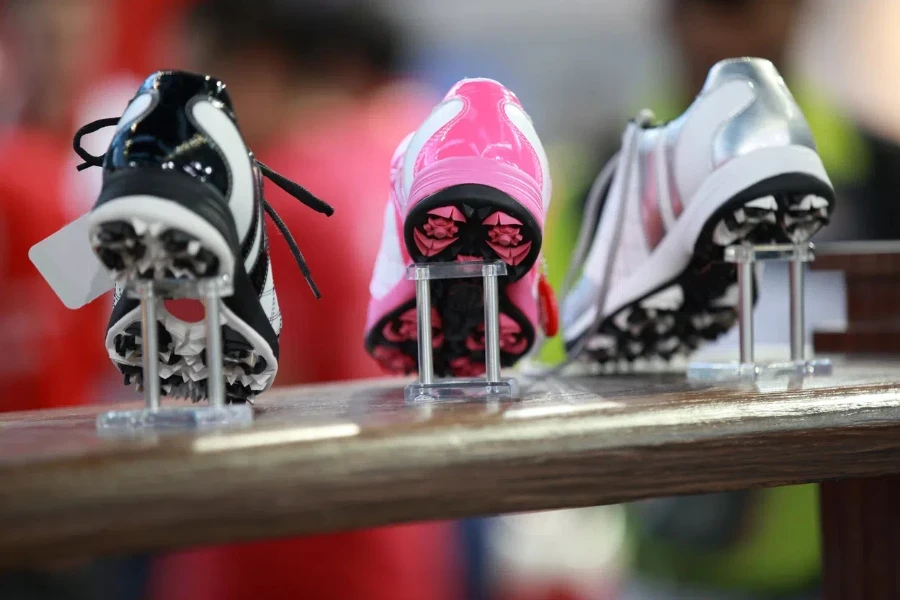Spikes, a crucial component in various sports, have seen a significant surge in demand. This article delves into the current market landscape, highlighting key players, competitive dynamics, and regional trends that are shaping the future of spikes in the sports industry.
Table of Contents:
Market Overview
Innovative Designs and Materials in Spikes
Technological Features Elevating Spike Performance
Comfort and Safety: Essential Aspects of Modern Spikes
Seasonality and Cultural Influences on Spike Trends
Market Overview

Current Demand for Spikes in the Sports Industry
The demand for spikes in the sports industry has been on a steady rise, driven by the increasing participation in sports and athletic activities globally. According to Research and Markets, the global sneakers market, which includes spikes, is projected to grow by USD 34.75 billion during 2023-2028, accelerating at a CAGR of 7.44% during the forecast period. This growth is attributed to the rising popularity of sports, the introduction of innovative products, and the expansion of distribution networks.
The surge in demand is also fueled by the growing emphasis on performance enhancement and injury prevention. Athletes and sports enthusiasts are increasingly opting for specialized footwear that offers superior traction, stability, and comfort. This trend is particularly evident in track and field events, where spikes play a critical role in improving performance.
Key Players and Competitive Landscape
The competitive landscape of the spikes market is characterized by the presence of several key players who are continuously innovating to maintain their market position. Leading companies such as Nike, Adidas, Puma, and New Balance dominate the market with their extensive product portfolios and strong brand presence.
Nike, for instance, has been at the forefront of innovation with its range of spikes designed for various sports. The company’s focus on research and development has led to the introduction of advanced materials and technologies that enhance performance and comfort. Similarly, Adidas has been leveraging its expertise in sports science to develop spikes that cater to the specific needs of athletes.
Other notable players in the market include ASICS, Under Armour, and Mizuno, each offering a diverse range of spikes tailored for different sports and performance levels. These companies are also investing heavily in marketing strategies, such as celebrity endorsements and sponsorships, to boost their brand visibility and attract a larger customer base.
Regional Market Trends and Preferences
The demand for spikes varies significantly across different regions, influenced by factors such as the popularity of sports, climatic conditions, and cultural preferences. According to Statista, the Asia-Pacific region is expected to exhibit the highest growth in the sports footwear market, driven by the increasing participation in sports and the rising disposable income of consumers.
In North America, the market is characterized by a strong preference for high-performance spikes, particularly in track and field events. The region’s well-established sports infrastructure and the presence of major sports leagues contribute to the robust demand for specialized footwear.
Europe, on the other hand, showcases a diverse market with varying preferences across countries. While countries like the UK and Germany have a strong affinity for track and field sports, Southern European countries exhibit a higher demand for spikes used in soccer and other field sports.
In emerging markets such as South America and Africa, the growing interest in sports and the increasing availability of affordable sports footwear are driving the demand for spikes. These regions are also witnessing a rise in local manufacturers who are catering to the specific needs and preferences of the regional markets.
Innovative Designs and Materials in Spikes

Cutting-Edge Materials Enhancing Performance
The evolution of spikes in the sports and accessory industry has been significantly influenced by the introduction of advanced materials. Modern spikes are now crafted from high-performance materials such as tungsten carbide and stainless steel, which offer superior durability and traction. Tungsten carbide, for instance, is a popular choice for running-focused models due to its lower profile and shallower depth, which allows for better grip on flat, frozen ground without digging too deeply into thicker ice or snow. This material is particularly effective in providing the necessary bite for athletes running on icy surfaces.
Stainless steel spikes, on the other hand, are favored for their robustness and ability to withstand harsh conditions. Models like the Hillsound Trail Crampon Pro utilize deep stainless steel spikes that can penetrate steep and icy terrain, offering a significant boost in security and performance. These materials not only enhance the functionality of the spikes but also contribute to their longevity, making them a valuable investment for serious athletes and outdoor enthusiasts.
Design Trends Shaping the Future of Spikes
The design of spikes has also seen remarkable advancements, with a focus on optimizing performance and user experience. One notable trend is the incorporation of more spikes per unit, which translates to increased traction. For example, the Kahtoola Microspikes feature 12 spikes that are 0.38 inches in length, providing a balance between quantity and effectiveness. In contrast, the Hillsound Trail Crampon Pro boasts 10 spikes that are 3/4 to 1 inch deep, offering greater penetration and stability on technical alpine terrain.
Another design trend is the strategic placement of spikes to enhance grip and stability. Models like the Snowline Chainsen Ultra and Black Diamond’s Access Spike have dedicated spikes at the front, which are particularly useful for navigating steep trails. This thoughtful design approach ensures that users can maintain their footing even in challenging conditions, thereby reducing the risk of slips and falls.
Customization Options for Personalized Fit
Customization has become a key aspect of modern spike design, allowing users to tailor their equipment to their specific needs and preferences. Many manufacturers now offer spikes with adjustable features, such as interchangeable spike lengths and customizable harness systems. This level of personalization ensures a secure and comfortable fit, which is crucial for optimal performance.
For instance, the Hillsound Trail Crampon Ultra features an elastometer harness with a Velcro strap across the forefoot, providing a snug and secure fit. This customization not only enhances comfort but also improves the overall stability and effectiveness of the spikes. As consumers continue to seek products that cater to their individual requirements, the trend towards customizable spikes is likely to gain further momentum.
Technological Features Elevating Spike Performance

Advanced Traction and Grip Technologies
Technological advancements have played a pivotal role in enhancing the performance of spikes. Modern spikes are equipped with advanced traction and grip technologies that provide superior stability on various surfaces. The integration of multi-directional spikes, for example, ensures that users can maintain their footing regardless of the terrain. This is particularly beneficial for activities such as trail running and hiking, where the ground conditions can vary significantly.
The use of smart materials that adapt to different surfaces is another notable innovation. These materials can adjust their grip based on the type of terrain, providing optimal traction in both wet and dry conditions. This adaptability is crucial for athletes who need reliable performance in diverse environments.
Integration of Smart Features for Enhanced Training
The integration of smart features into spikes is a growing trend that is revolutionizing the way athletes train. Some modern spikes are equipped with sensors that track various performance metrics, such as speed, distance, and ground contact time. This data can be synced with mobile apps, allowing athletes to analyze their performance and make informed adjustments to their training routines.
These smart features not only enhance the training experience but also provide valuable insights that can help prevent injuries. By monitoring factors such as stride length and impact force, athletes can identify potential issues and address them before they lead to serious problems. This proactive approach to training is becoming increasingly popular among professional and amateur athletes alike.
Durability and Weather Resistance for All Conditions
Durability and weather resistance are essential features of modern spikes, ensuring that they can withstand the rigors of outdoor activities. High-quality materials such as stainless steel and tungsten carbide provide excellent resistance to wear and tear, while advanced coatings protect against corrosion and rust.
Weather resistance is particularly important for spikes used in winter conditions. Models like the Black Diamond Distance Spike are designed to perform well in icy and snowy environments, with features such as deep stainless steel spikes and robust harness systems. These spikes are built to endure harsh weather conditions, providing reliable performance and peace of mind for users.
Comfort and Safety: Essential Aspects of Modern Spikes

Ergonomic Designs for Maximum Comfort
Comfort is a critical consideration in the design of modern spikes, as it directly impacts the user’s performance and overall experience. Ergonomic designs that conform to the natural shape of the foot provide a comfortable fit, reducing the risk of blisters and other discomforts. Features such as cushioned insoles and flexible harness systems enhance comfort, allowing users to focus on their activities without distraction.
Safety Features to Prevent Injuries
Safety is another paramount concern in the design of spikes. Modern spikes are equipped with various safety features to prevent injuries, such as anti-slip coatings and reinforced toe caps. These features provide additional protection and stability, reducing the risk of slips and falls. The strategic placement of spikes also plays a crucial role in enhancing safety, ensuring that users have a secure grip on various surfaces.
Balancing Performance with Comfort
Achieving a balance between performance and comfort is a key goal in the design of modern spikes. High-performance materials and advanced technologies are combined with ergonomic designs to create spikes that offer both superior functionality and comfort. This balance is essential for athletes who need reliable performance without compromising on comfort.
Seasonality and Cultural Influences on Spike Trends

Seasonal Variations in Spike Demand
The demand for spikes varies significantly with the seasons, with winter seeing a higher demand for traction devices. According to the Best Winter Traction Devices of 2024, models like the Kahtoola Microspikes and Black Diamond’s Access Spike are particularly popular during the winter months due to their superior grip on icy and snowy surfaces. In contrast, spikes designed for running and hiking are more in demand during the warmer months, when outdoor activities are more prevalent.
Cultural Preferences Impacting Design and Functionality
Cultural preferences also play a significant role in shaping the design and functionality of spikes. In regions where winter sports are popular, there is a higher demand for spikes that offer superior traction and durability in snowy conditions. Conversely, in areas with milder climates, the focus is on lightweight and versatile spikes that can be used for a variety of activities.
Global Events and Their Influence on Spike Popularity
Global events such as the Winter Olympics and international marathons have a considerable impact on the popularity of spikes. These events not only showcase the latest advancements in spike technology but also drive consumer interest and demand. Athletes and enthusiasts often seek out the same equipment used by top performers, leading to increased sales and innovation in the industry.
Conclusion
The future of spikes in the sports and accessory industry looks promising, with continuous advancements in materials, design, and technology driving innovation. As manufacturers strive to meet the evolving needs of athletes and outdoor enthusiasts, we can expect to see even more sophisticated and customizable spikes that offer unparalleled performance and comfort. The integration of smart features and the focus on safety and durability will further enhance the user experience, making spikes an indispensable tool for a wide range of activities.




